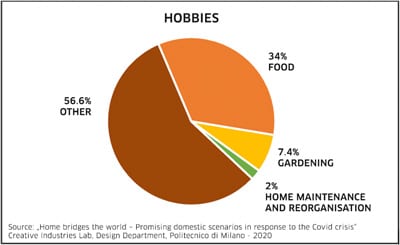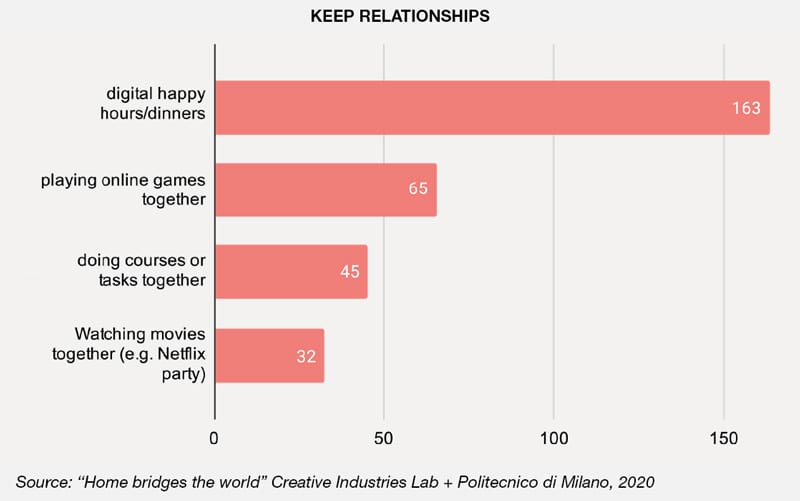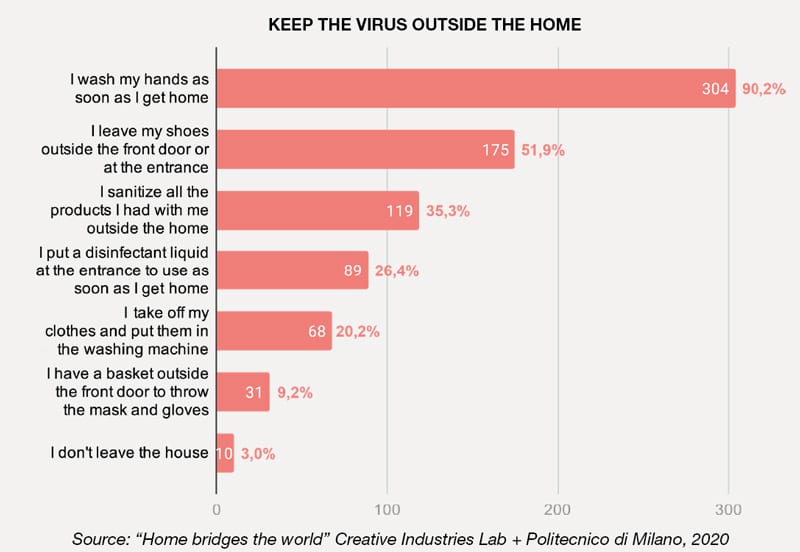Market Economics


Design scenarios, solutions for the “new normal” | by Valentina Poli
The Covid-19 pandemic and the measures taken to combat it have brought profound changes to our behaviour and lifestyles, while the lockdowns in particular have forced a significant portion of the population to stay indoors. This has influenced not only the way we use living spaces but also the distribution of the spaces and the functions traditionally associated with them.
Milan Polytechnic’s Design Department sent out a questionnaire to 337 people (290 living in Italy, 47 in other parts of the world) to analyse their desires and needs. It constructed seven possible design scenarios for the future of homes in the post-Covid era and identified new opportunities for designers (Source: “Home bridges the World. Promising domestic scenarios in response to the Covid crisis” – Creative Industries Lab, Design Department, Politecnico di Milano). The survey mainly considered residential spaces given that 75.6% of people worked from home during the lockdown and spent almost all of their time in their own homes.
– Working from home as normal. Adapting spaces, furniture and lighting to cope with the new needs. The fear of not having a suitable place for working in the home has fuelled a need for design solutions for dividing up spaces, such as modular work islands.
– Practical activities. During lockdown, 33% of people spent more time on their hobbies: 34% on food-related activities, 7.4% on gardening and 2% on home maintenance and reorganisation.

This led to the creation of easy-to-clean, adaptable and convertible rooms with modular furniture and spaces set aside for DIY activities.
– Collective entertainment at home. People used physical and digital media to keep in touch with others, while television and digital content played an increasingly important role.

It is important to find a good balance between digital networking and physical interaction, for example by organising home parties where participants connect digitally or meet in-person in small groups.
– Personal wellbeing at home. 54.3% of respondents began exercising at home; 22.2% devoted more time to looking after themselves and the people close to them. It is important to create the right atmosphere and to seek support from a smart assistant during physical exercise and mental training.
– Keep the virus outside the home. 90% of respondents wash their hands as soon as they return home; 51.9% leave their shoes outside the door; 35.5% sanitise everything they had with them outside the home.

There is a need for ideas that help to maintain a high level of hygiene in the home and allow domestic spaces to be divided up if someone becomes positive for the virus. Design solutions might include hygiene monitoring systems and systems to facilitate living in quarantine at home with the rest of the family.
– Outdoor space is a must-have. The lockdown has brought a greater desire for contact with nature. 45% of respondents reported a greater appreciation of outdoor spaces and places for relaxing and socialising. This has led to efforts to bring outdoor spaces into the home, to design systems that allow people to interact with others while maintaining physical distancing.
– Solidarity from home. 32% of people bought food in neighbourhood shops to support local businesses and 8.6% shopped for other people who were unable to do so themselves. This helps people build information and communication networks within their local neighbourhoods and devise various ways of helping each other.
The conditions created by the pandemic have certainly accelerated changes in society. In all seven scenarios, the most relevant industrial sectors were furniture, interior design, real estate, household appliances and, in some cases, entertainment and food. The diffusion of technology and digitalisation has served to expand services, to support and facilitate activities, to aid interaction with other people and to sanitise environments and make them safer. In addition, rapid changes have proved necessary to improve work-life balance, expand home working and reconnect with nature.
All of this has brought opportunities for innovation, both for individuals and for bodies or governments willing to play an active role in the “new normal”.
February 2021



